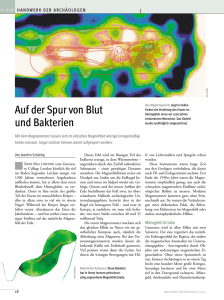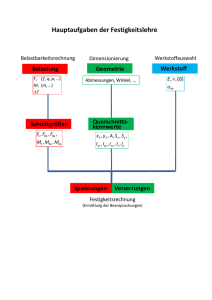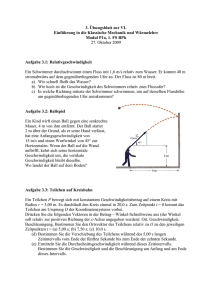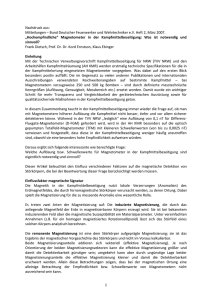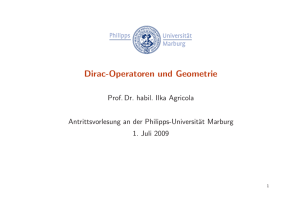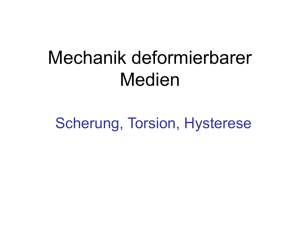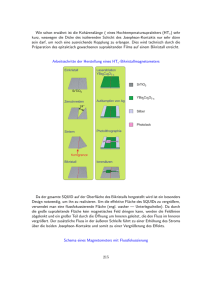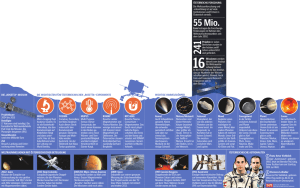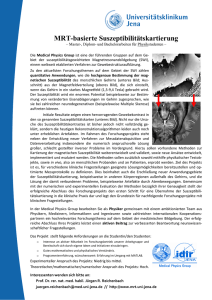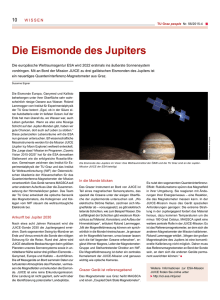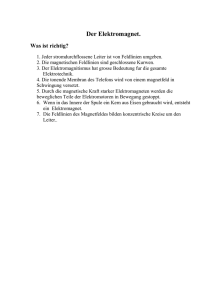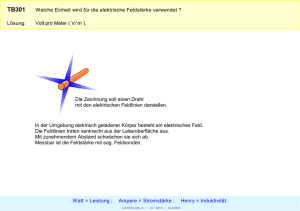The Zurich Torsion Magnetometer
Werbung
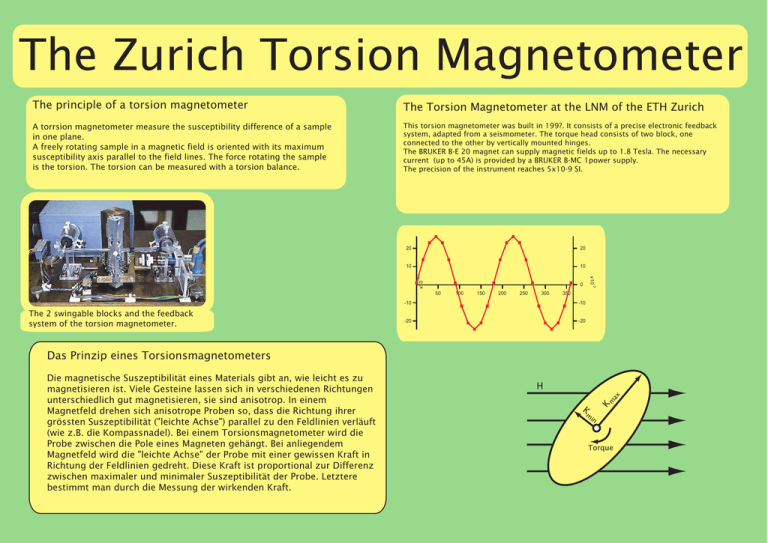
The Zurich Torsion Magnetometer The principle of a torsion magnetometer The Torsion Magnetometer at the LNM of the ETH Zurich A torrsion magnetometer measure the susceptibility difference of a sample in one plane. A freely rotating sample in a magnetic field is oriented with its maximum susceptibility axis parallel to the field lines. The force rotating the sample is the torsion. The torsion can be measured with a torsion balance. This torsion magnetometer was built in 199?. It consists of a precise electronic feedback system, adapted from a seismometer. The torque head consists of two block, one connected to the other by vertically mounted hinges. The BRUKER B-E 20 magnet can supply magnetic fields up to 1.8 Tesla. The necessary current (up to 45A) is provided by a BRUKER B-MC 1power supply. The precision of the instrument reaches 5x10-9 SI. 20 10 10 x10 x10 -3 20 The 2 swingable blocks and the feedback system of the torsion magnetometer. 100 150 200 250 300 -3 0 50 350 -10 -10 -20 -20 Das Prinzip eines Torsionsmagnetometers K m ax H K Die magnetische Suszeptibilität eines Materials gibt an, wie leicht es zu magnetisieren ist. Viele Gesteine lassen sich in verschiedenen Richtungen unterschiedlich gut magnetisieren, sie sind anisotrop. In einem Magnetfeld drehen sich anisotrope Proben so, dass die Richtung ihrer grössten Suszeptibilität ("leichte Achse") parallel zu den Feldlinien verläuft (wie z.B. die Kompassnadel). Bei einem Torsionsmagnetometer wird die Probe zwischen die Pole eines Magneten gehängt. Bei anliegendem Magnetfeld wird die "leichte Achse" der Probe mit einer gewissen Kraft in Richtung der Feldlinien gedreht. Diese Kraft ist proportional zur Differenz zwischen maximaler und minimaler Suszeptibilität der Probe. Letztere bestimmt man durch die Messung der wirkenden Kraft. m in Torque
